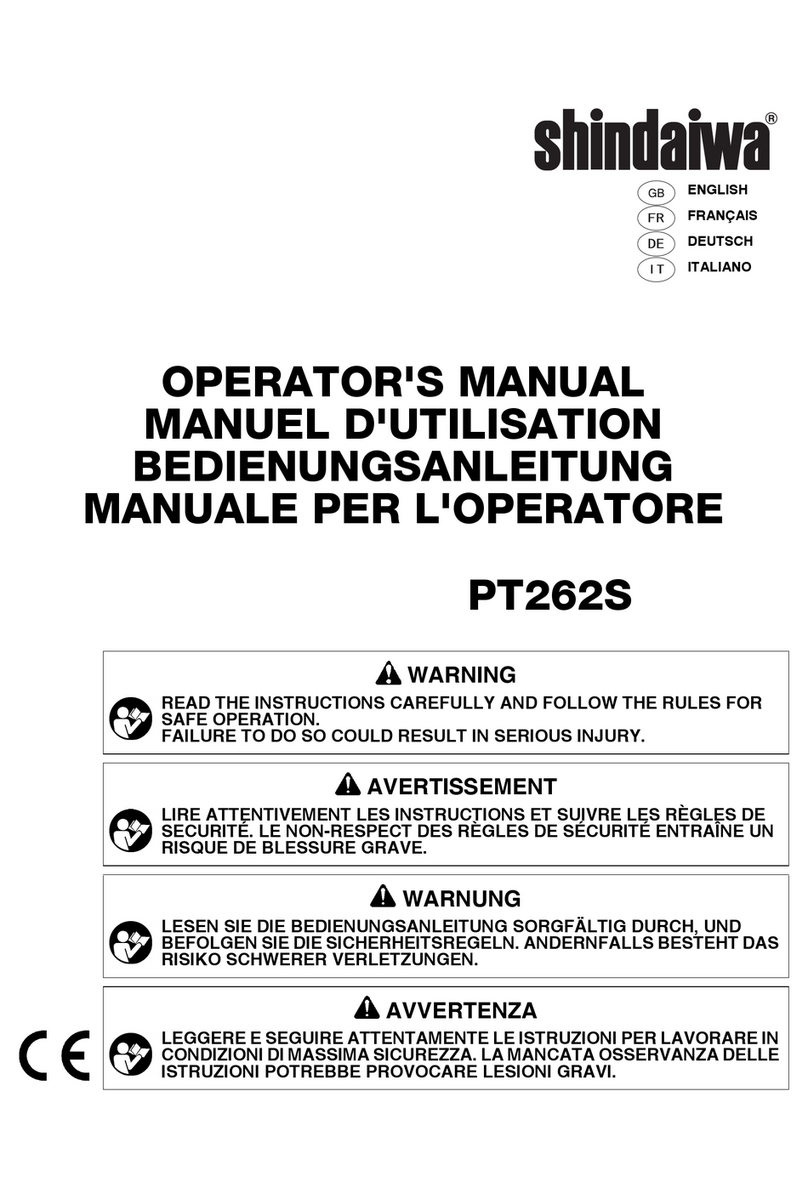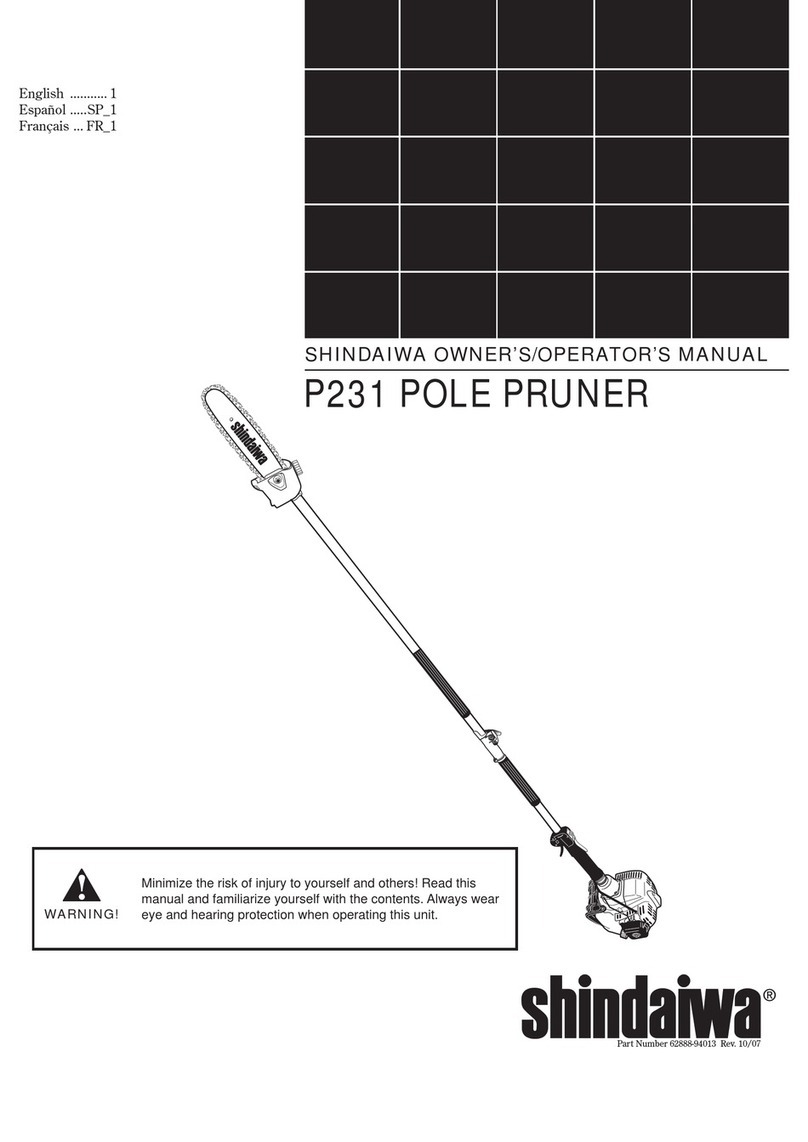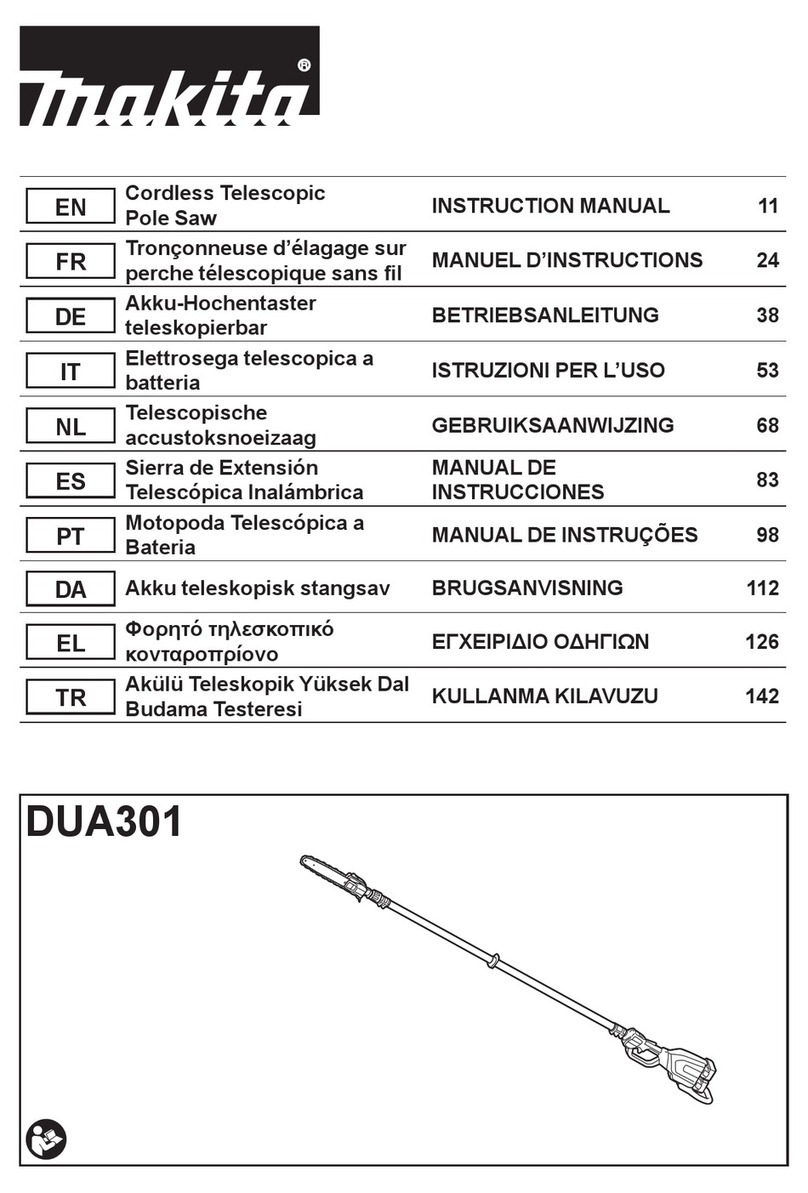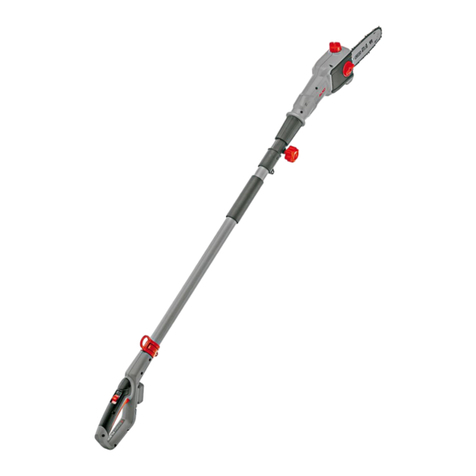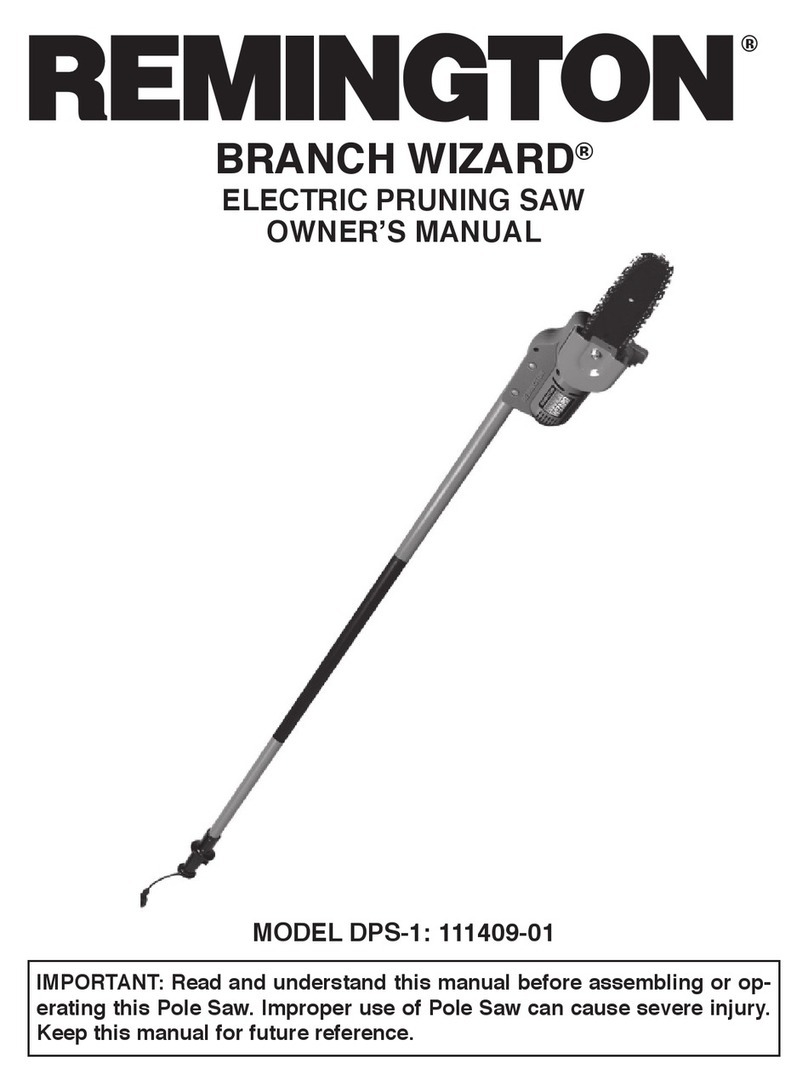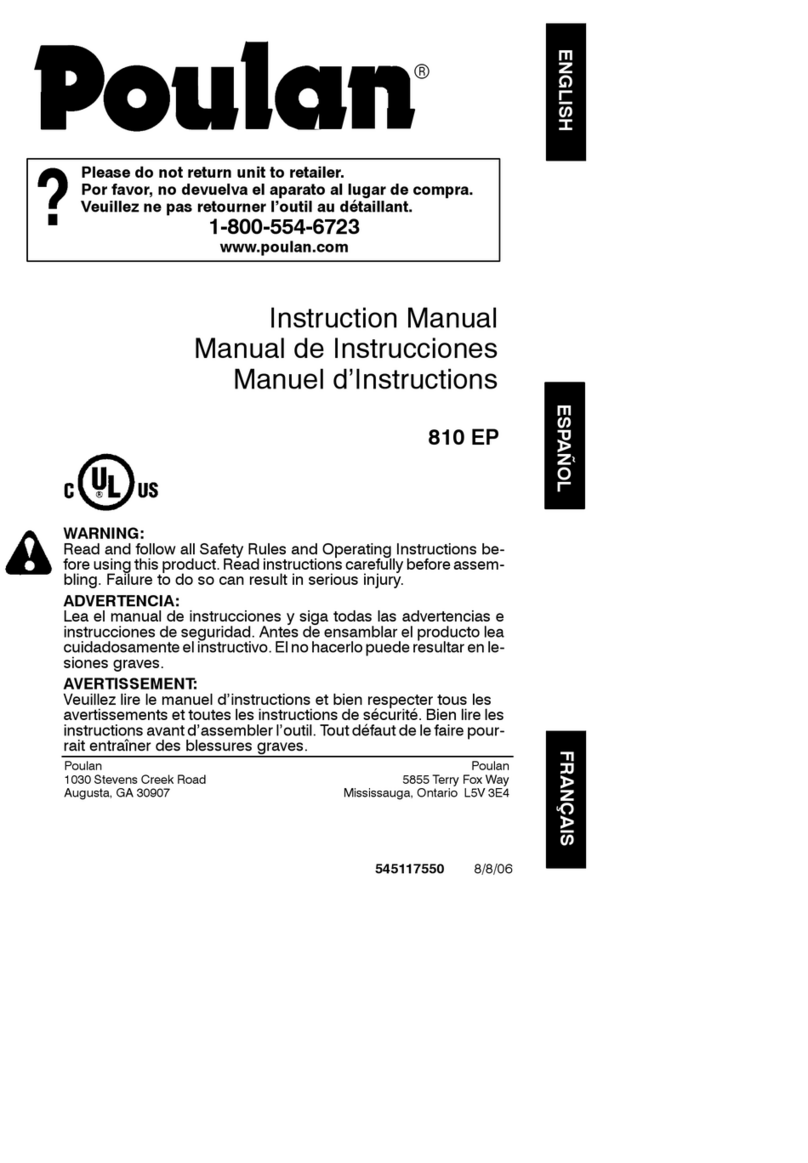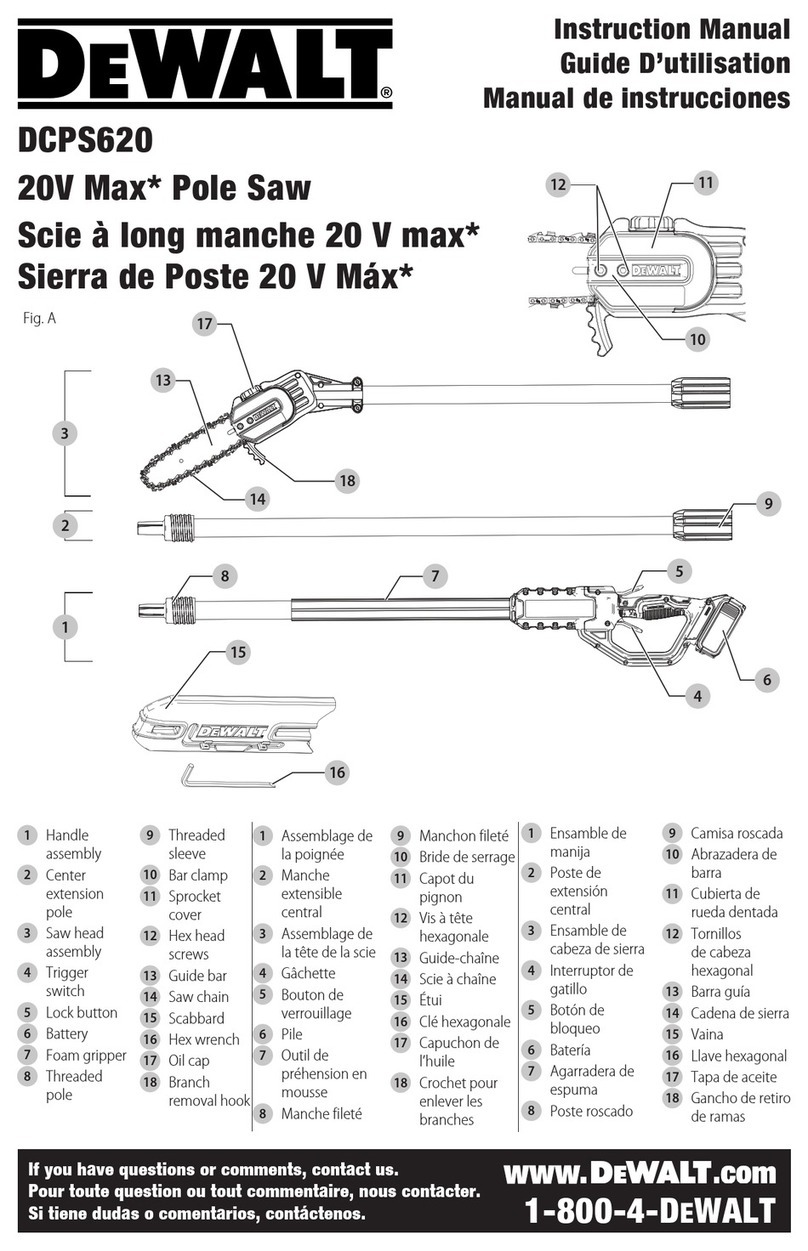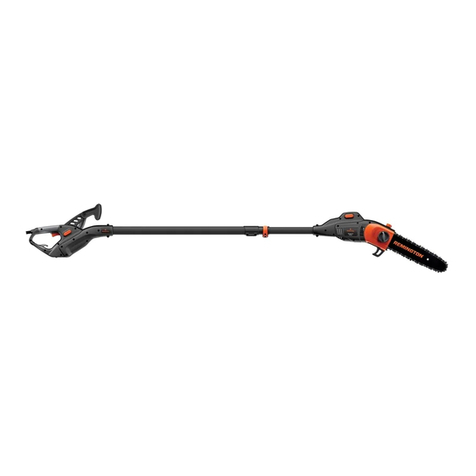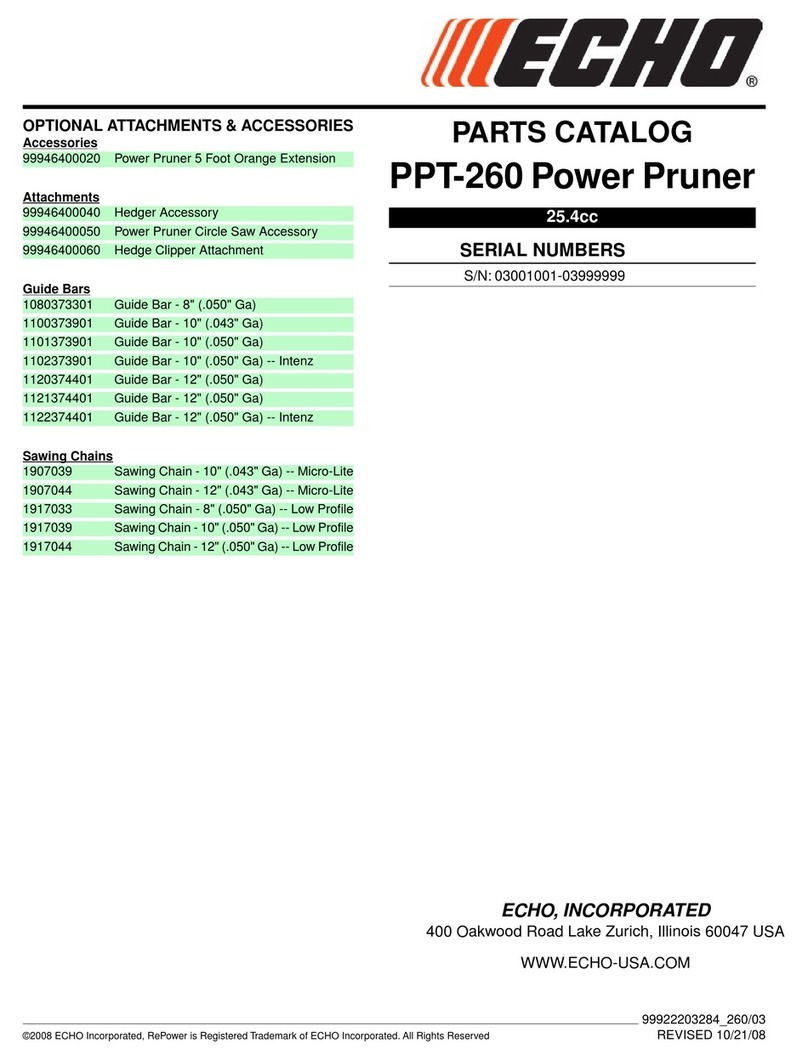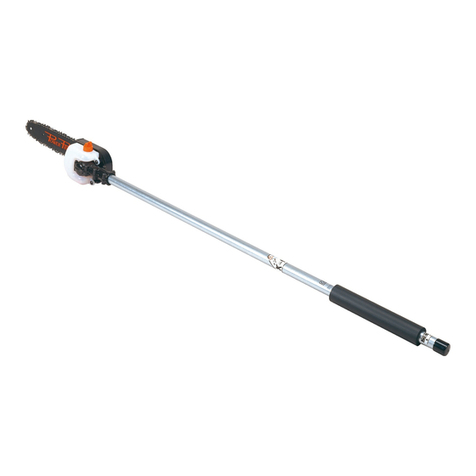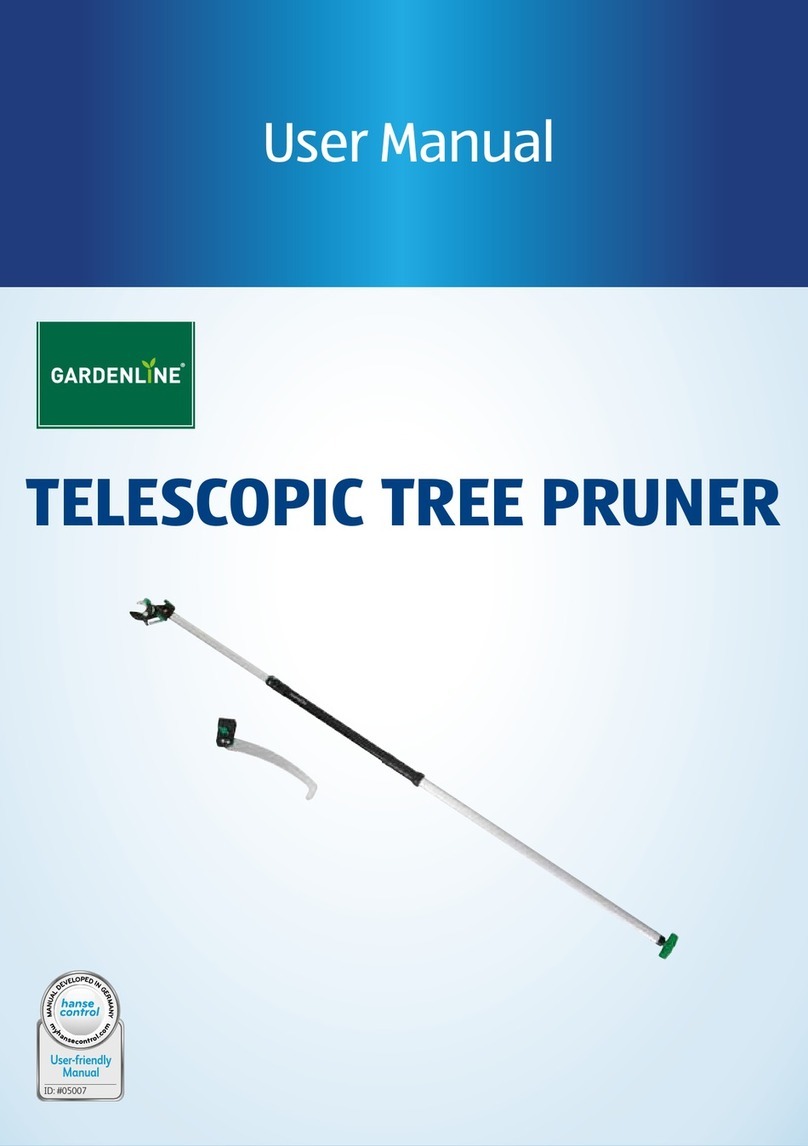3
Safety Precautions
A pole pruner operates at very high speeds
and has the potential to do serious dam-
age if misused, abused or mishandled. To
reduce the risk of injury, you must main-
tain control at all times, and observe all
safety precautions during operation. Never
permit a person without training or
instruction to operate this pruner!
DANGER!
THE PRUNER IS NOT INSU-
LATED AGAINST ELECTRICAL
SHOCK! Approaching or contacting
electrical line with the pruner could
cause death or serious injury. Keep
the pruner at least10 meters away
from electrical lines or branches that
contact electrical lines.
Warning Labels
Warning labels affixed to the
machine are as follows:
Both kickback and pinching may
cause you to lose control of the pole
pruner which could result in serious
personal injury. Do not rely ex-
clusively on the safety device
built into the pruner! You must
take several steps to keep your jobs
free from accident or injury:
1. Understand kickback and pinching!
You can reduce or eliminate the el-
ement of surprise. Sudden surprise
contributes to accidents.
2. Keep a firm grip on the pole pruner
with both hands whenever the en-
gine is running. A firm grip will help
you reduce the effects of kickback
and pinching as well as maintaining
control of the unit.
3. Make sure the area in which you
are cutting is free from obstructions.
Do not let the nose of the guide bar
contact a log, branch, or any other
obstructions which could be hit
while you operate the pole pruner.
4. Cut at high engine speeds.
5. Follow the manufacturer’s instruc-
tions for sharpening and maintain-
ing the chain.
6. Use only the replacement bar and
chain or equivalent as specified by
the manufacturer.
WARNING!
Kickback and Pinching
Safety Precautions
Read and follow this manual,
make sure anyone using the
pruner does likewise. Failure
to do so could result in serious
personal injury or machine failure. Keep
this manual for future reference.
Always wear a hard hat
to reduce the risk of head
injuries during operation of
this machine. In addition,
always wear eye and hearing protection.
Shindaiwa recommends wearing a
face shield as additional face and eye
protection.
Wear nonslip heavy-duty work
gloves to improve your grip on
the pole pruner handle. Wear
sturdy footwear with nonslip
soles to provide good footing.
Steel-toe safety boots are
recommended. Wear snug-
fitting clothes that also permit freedom of
movement.
Never operate this tool or
any other power equipment if
you are tired, ill, or under the
influence of alcohol, drugs, or
any substance that could affect your ability
or judgement.
Keep bystanders at least
15 meters away from the
operating pruner to reduce the
risk of being struck by falling
objects or thrown debris.
Never cut off branches
over your head. The cut-off
branches may hit you and
cause serious injury.
Never operate the pruner at an
angle greater than 60º in order
to reduce the risk of being
struck by falling objects during
operation.
Never touch the saw chain
when starting the engine and
while operating this machine.
Chain oil fill/oil pump
Sound Power Level
(measured in accordance
with 2000/14/EC)
Beware of Kickback!
Kickback can occur whenever the tip of the
guide bar touches an object
while the saw is operating.
Kickback may force the bar
up and back toward the
operator with lightning-like
speed!
Beware of pinching.
Pinching the saw along the
tip of the guide bar may force
the bar back rapidly toward
the operator. Pinching can
occur whenever wood closes
in around the moving chain.

